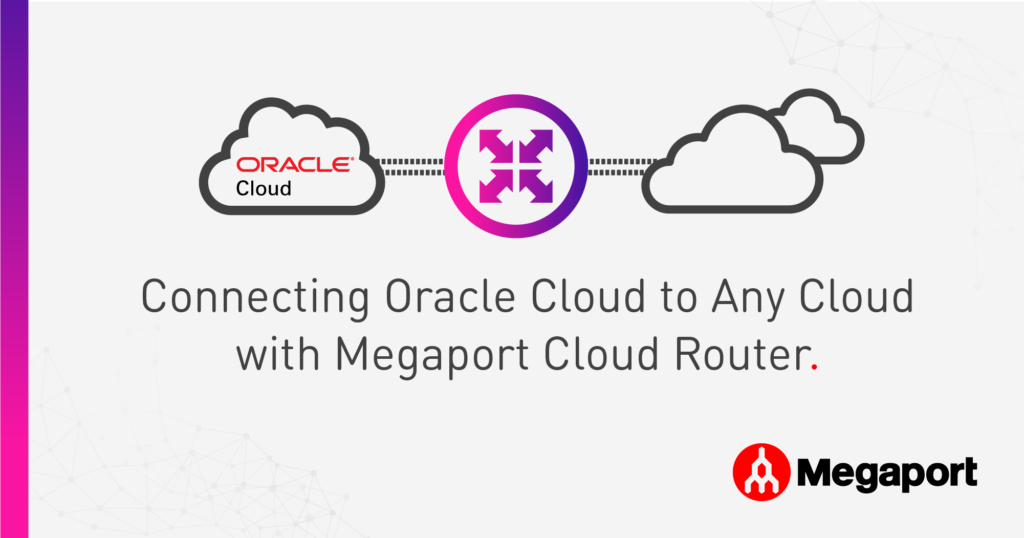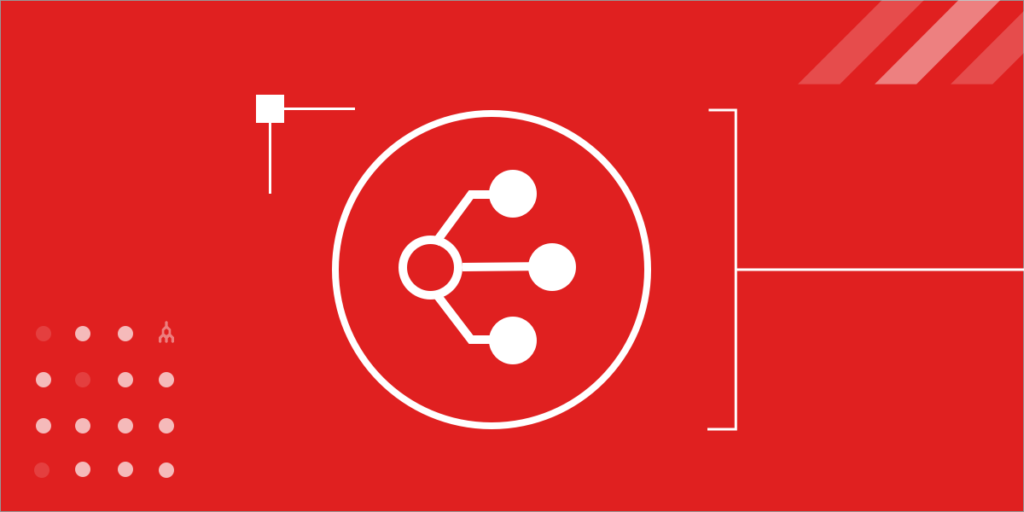
Connecting Oracle Cloud to Any Cloud with MCR
- August 19, 2019
- RSS Feed
How to use virtual routing for connecting your workloads between Oracle Cloud and other cloud environments.
It’s easy to see why enterprise companies include Oracle Cloud as a core element in their cloud strategy. There are many factors attracting massive amounts of customers to this cloud giant. The first of which springs to mind is their high-performance database solutions that are highly valuable for organisations of any size. But, there’s much more on offer from Oracle Cloud that complements a rounded and integrated approach making it easy for businesses to get started in the cloud.
Common enterprise use cases for Oracle Cloud
When users are looking for cloud providers, they’re typically seeking the ‘full package’ including the latest technologies, prebuilt tooling, automation, and easy integration into existing systems. Oracle’s application suite, platform, and infrastructure enables business differentiation with more than a thousand software as a service (SaaS) applications and Oracle’s infrastructure as a service (IaaS) capabilities. Companies can run any workload in the cloud – in fact, Oracle Cloud Platform offers the same capabilities in the cloud as on-premises for the greatest choice and most flexible access.
For this reason, it’s common to see these capabilities used in some of the following scenarios:
- Running hybrid cloud environments
- Migration from on-prem to cloud
- Running simultaneous workloads on Oracle Cloud and with other CSPs
- Migrating services from one cloud to another
Connectivity as an enabler of communication between the clouds
These scenarios all depend on connectivity to function completely. It’s the glue that holds them all together. Moving data between on-premises and cloud environments requires your A-end and B-end to talk to one another efficiently. Making the right choice when it comes to connectivity ensures successful deployments and migrations. With direct, flexible connectivity to and between your cloud environments, and your on-premises hardware or colocation facility, enables a dedicated line for data movement as well the choice to change and flex based on your business demands.
Let’s explore how Megaport’s Network as a Service (NaaS) solution can enable direct, flexible connectivity to enable the scenarios above. Each of these use cases requires connectivity between on-premises and Oracle Cloud, between Oracle Cloud and another CSP, or between cloud platforms within the Oracle sphere. We’ll explore all three of these options.
Connecting from on-premises to Oracle Cloud
As an increasing number of Oracle customers have begun the journey to Oracle Cloud, the process has become simpler. Oracle offers migration tools that simplify how organisations migrate on-premises workloads to the cloud. For many users, it’s not necessarily about migration and more about fast continual archiving, fast archive retrieval, and disaster recovery.
However, no matter the use case, the move to the cloud brings concerns about security, latency, and reliability. Connecting from any Megaport enabled data centre to Oracle Cloud is a straightforward process which solves any security and privacy concerns by ensuring traffic traverses our private Software Defined Network.
This works seamlessly for the first two scenarios highlighted above - Running hybrid cloud environments and Migration from on-prem to cloud. More information about how to enable hybrid cloud from your locations to Oracle Cloud is available here.
Connecting from Oracle Cloud to other cloud providers
One of the complexities with moving to the cloud is finding the best way to connect your cloud environment to other CSP platforms. With many large enterprises now embracing multicloud, we’re seeing many Oracle Cloud users obtaining the benefits of best-in-class services from a variety of CSPs and creating and tailored cloud strategy for their business.
The headache arises when you want to use the services from two or more CSPs and want to avoid connecting over the public internet or tromboning your traffic through an on-premises facility.
The simple solution is to spin up a Megaport Cloud Router (MCR) which resides on the Megaport Network. MCR is a virtual router that enables dedicated connectivity between cloud environments without the need to manage physical hardware. You can provision an MCR quickly and easily in your Megaport account, and within a few minutes, you’ll gain the capabilities of directly connecting multiple clouds without routing your traffic back to a data centre or using the public internet. You can see how this works below:
Workloads can be distributed between different cloud environments so you can choose your desired architecture based on CSP service capabilities and cost – and there’s no need to worry about latency. Service offerings are constantly evolving, MCR drives business agility by enabling your architecture to quickly alter as CSP services change.
Quick Case Study:
A Megaport customer in the UK required connectivity from Oracle Cloud Database to their workloads in AWS. Following an introduction to MCR, they proceeded to spin up a 5 Gbps instance in London and established BGP sessions to both clouds. This provided an introduction to live services in less than 90 minutes. They were able to save on time, costs, and complexity when creating a multicloud and cloud to cloud strategy.
Migrating from OCI Classic to Oracle Cloud
Many users of OCI Classic have identified a business need and are seeking a secure, flexible way to migrate databases and workloads from Oracle Cloud Infrastructure Classic (OCI-C) to Oracle Cloud Infrastructure (OCI).
The most common option is to use an encrypted connection across the public internet. For example, to migrate a single-instance Oracle Database from an OCI-C server to an OCI server that uses bare metal, you must open ports to establish an SSH session over the public internet.
MCR makes it possible to connect to any of the ten OCI-C FastConnect on-ramp locations in Ashburn, Chicago, London, Amsterdam, and Sydney. Likewise, it’s also possible to connect the MCR to any of the ten OCI FastConnect on-ramp locations in Phoenix, Ashburn, London, and Frankfurt. Combining these environments may be completed in minutes via your Megaport account to facilitate secure migration of Database and services at the data rate required to suit your needs.
As each organisation identifies a cloud strategy, Megaport has developed a common set of connectivity scenarios when accessing Oracle Cloud services. Scenarios include single, dual, High-Availability (HA), and Disaster Recovery (DR) based practices.
For more details on creating a cloud strategy incorporating Oracle, feel free to download our Oracle Cloud infopaper from our dedicated webpage.
Article reviewed by Vittorio Garbuglio, Cloud Architect, Oracle.



